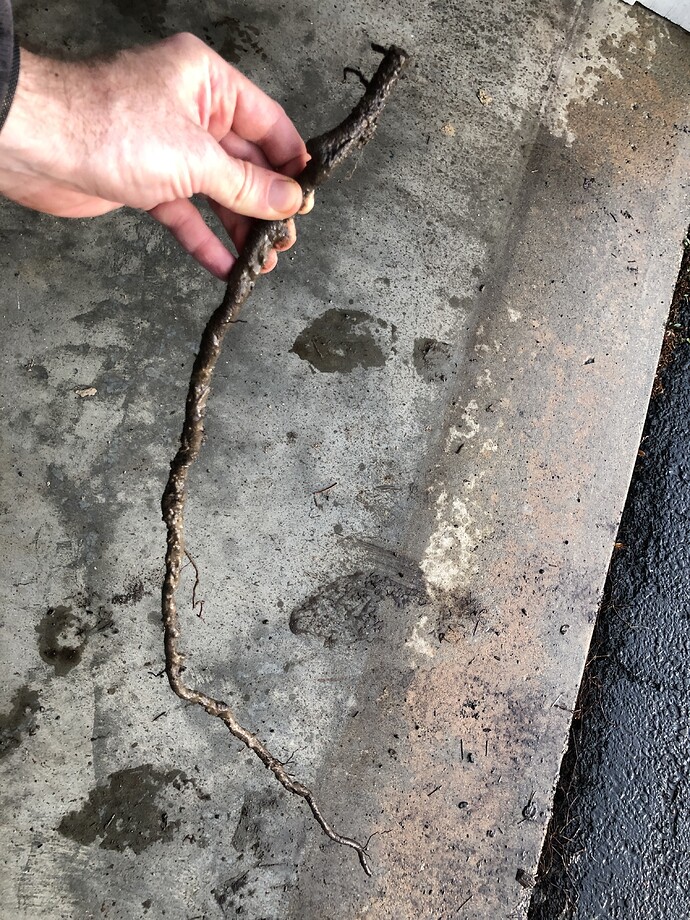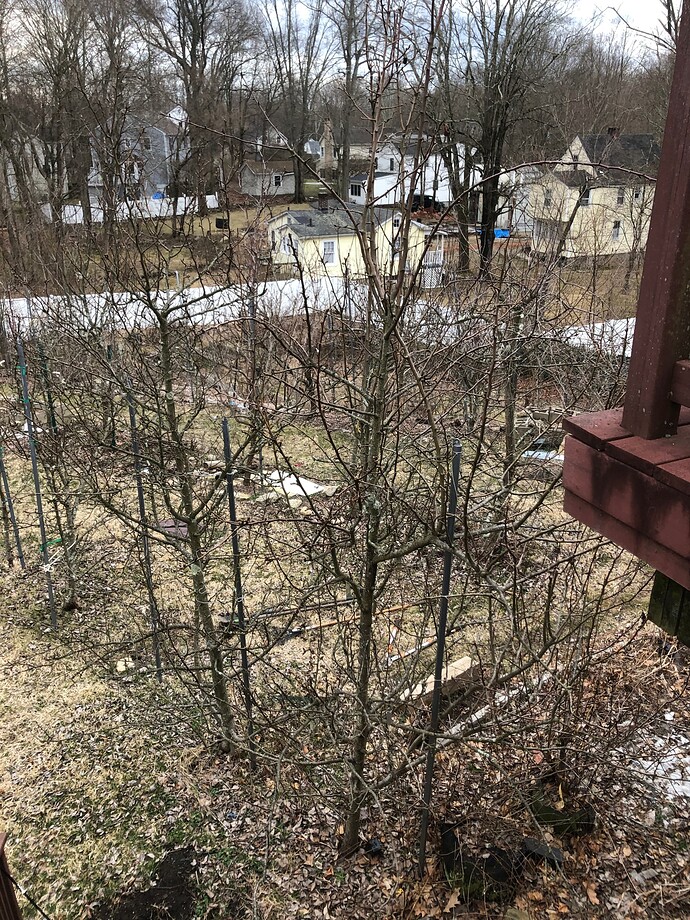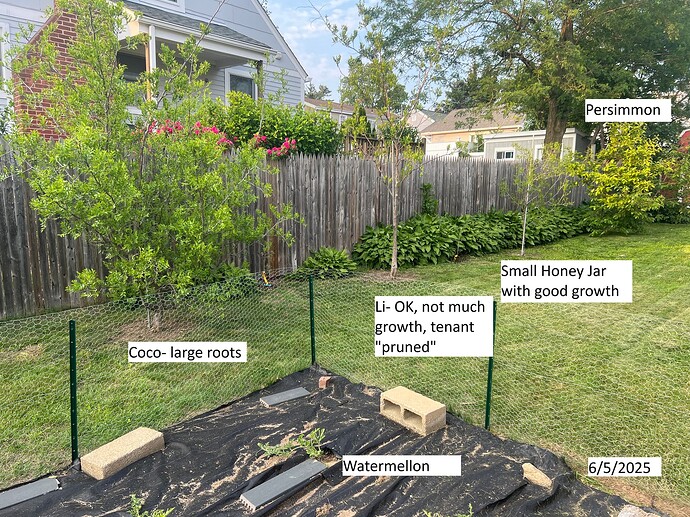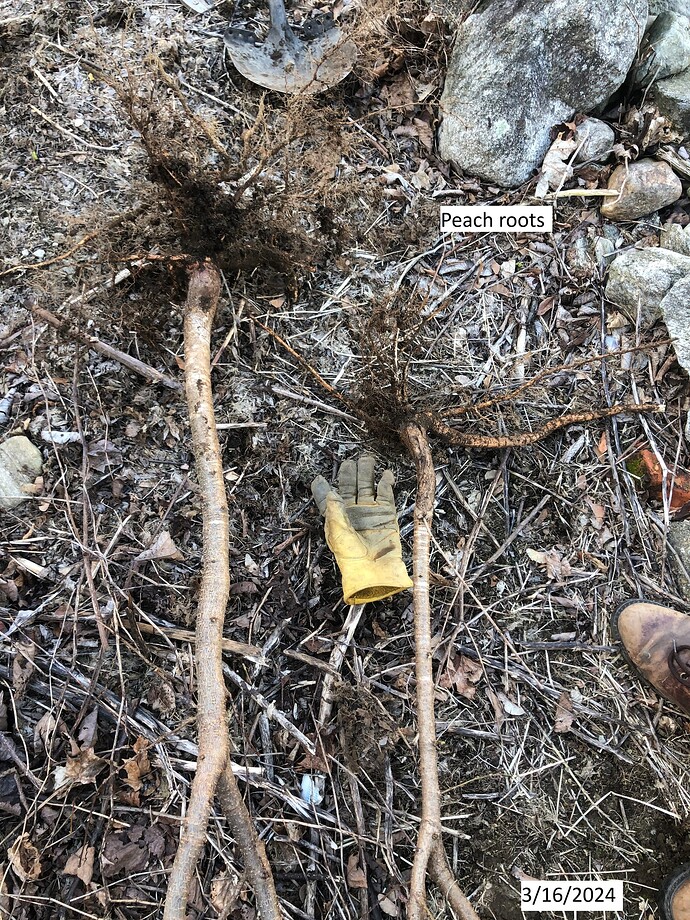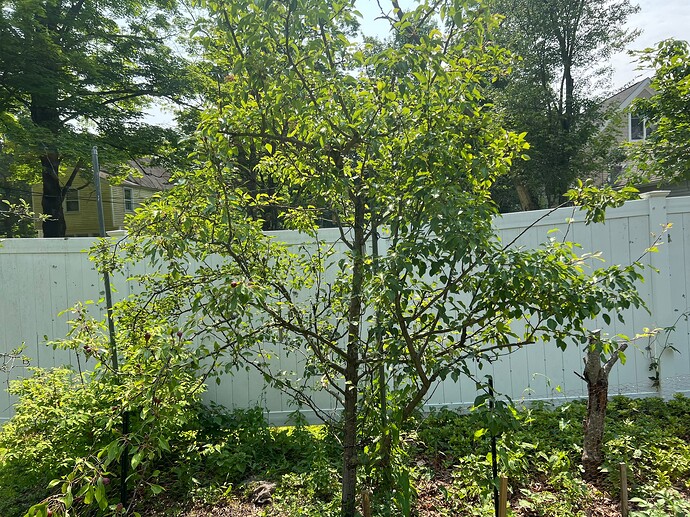Each time we (wife and I) buy a rental property, I plant the yard with fruit trees. This is the first time I’m not buying any new trees. Instead, I decided to thin out my existing trees from home and move some to the new rental.
This should:
1.) allow more space/sun for the remaining trees
2.) larger trees of good varieties for the rental, as it looks to be a tough year to find a lot of selection online
3.) save $
Today, I hit the snag in the plan…actually doing it.
I planted a few potted trees last week, a plum that I grafted to a sucker and potted up last spring and a jujube that I ordered last spring and didn’t end up planting. Not bad at all- the soil there was actually much easier to work than at my house.
But today, I started digging up trees and it got a lot tougher.
The first tree was a M27 apple which was planted in 2011 and has gotten pretty large (at least, as large as M27 mini-dwarf trees get, about 7’ tall).
I dug around and tried to gently lift the tree out. Not so easy, though I eventually got it.
But, there were quite a few lost roots. I’m guessing M27 rootstock being fairly brittle didn’t help.
The next tree, a Coco jujube planted in 2018 (4 years in ground):
So, I decided to try to wash the dirt away from the roots with a hose (good that it was ~63F today).
This worked better, but it took quite a while:
Of course, the next problem was getting them in my car (an SUV). This is just one tree, the Coco (which does have nasty thorns):
The roots (and branches) go from one side to the other and the top sticks out a bit:
Obviously, there isn’t room for the 2nd tree (the Red Boskoop). It’s roots were much smaller (at least given how I dug it), so it got put into a bag and tied to the top of the car. Not my favorite way to travel (I kept the speed down to ~25mph and had to pull over a number of times to let people by.
Of course, planting wasn’t all that easy either, especially for the Coco with the massive roots (maybe 5’ wide when stretched out). After digging a pretty large hole, I put in the stake, then tied the tree in place. After that, I went around and dug a bit more in the spots where roots stuck well past the hole. In a few places, I just used the shovel to lift the lawn and slide the root under it…
You would think that 3 buckets and all the dirt on the plastic would be enough, but I ended up needing more to properly cover the roots. Luckily, the Red Boskoop hole actually had extra (that area didn’t have as much lawn to discard from the hole location, so I snagged 2 extra buckets from there. I’ll go back tomorrow with woodchips to further cover everything.
These 2 trees left me pretty tired- 5 hours of digging and carrying. But I had just enough daylight to do one more small one from a nearby rental. The persimmon there (grafted to Chinebuli last spring) sent out a sucker which grew to over 6’ tall from both leaders.
First priority was to not hurt the mother tree, so I gently dug, then cut the main connecting root. After that, it was still a bit of work to get it out, but not that bad. And it was a whole lot easier to plant too.
The current plan has ~18 trees being planted (5 of which are now in), but many are potted (figs and a couple more potted jujubes) or smaller trees. There are still 3-4 more decent sized trees. I may plan on doing 1 tree per day for those on days when I need to stop by anyway. That will better space out my exercise, as I got a bit too much today…














 ).
).



